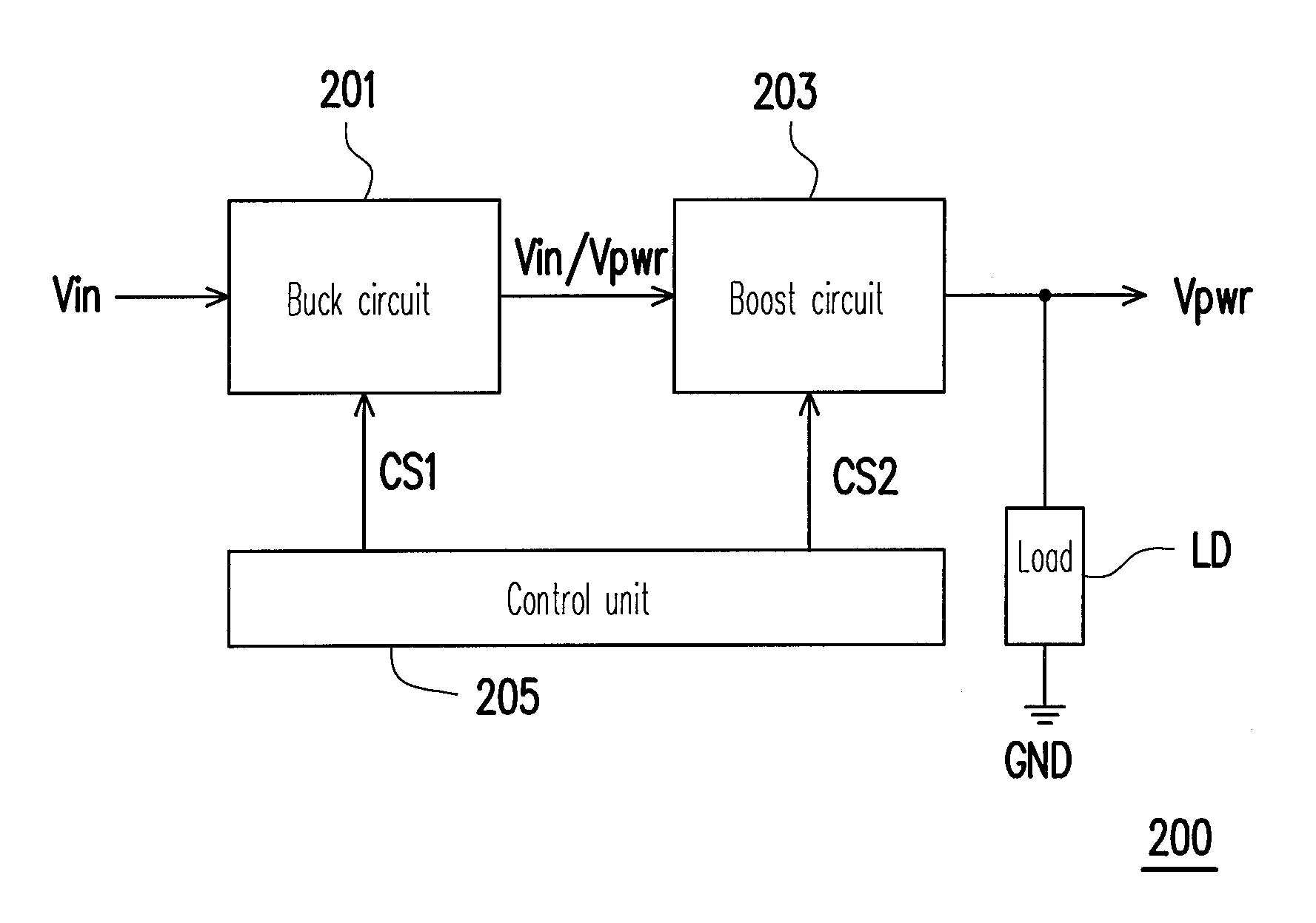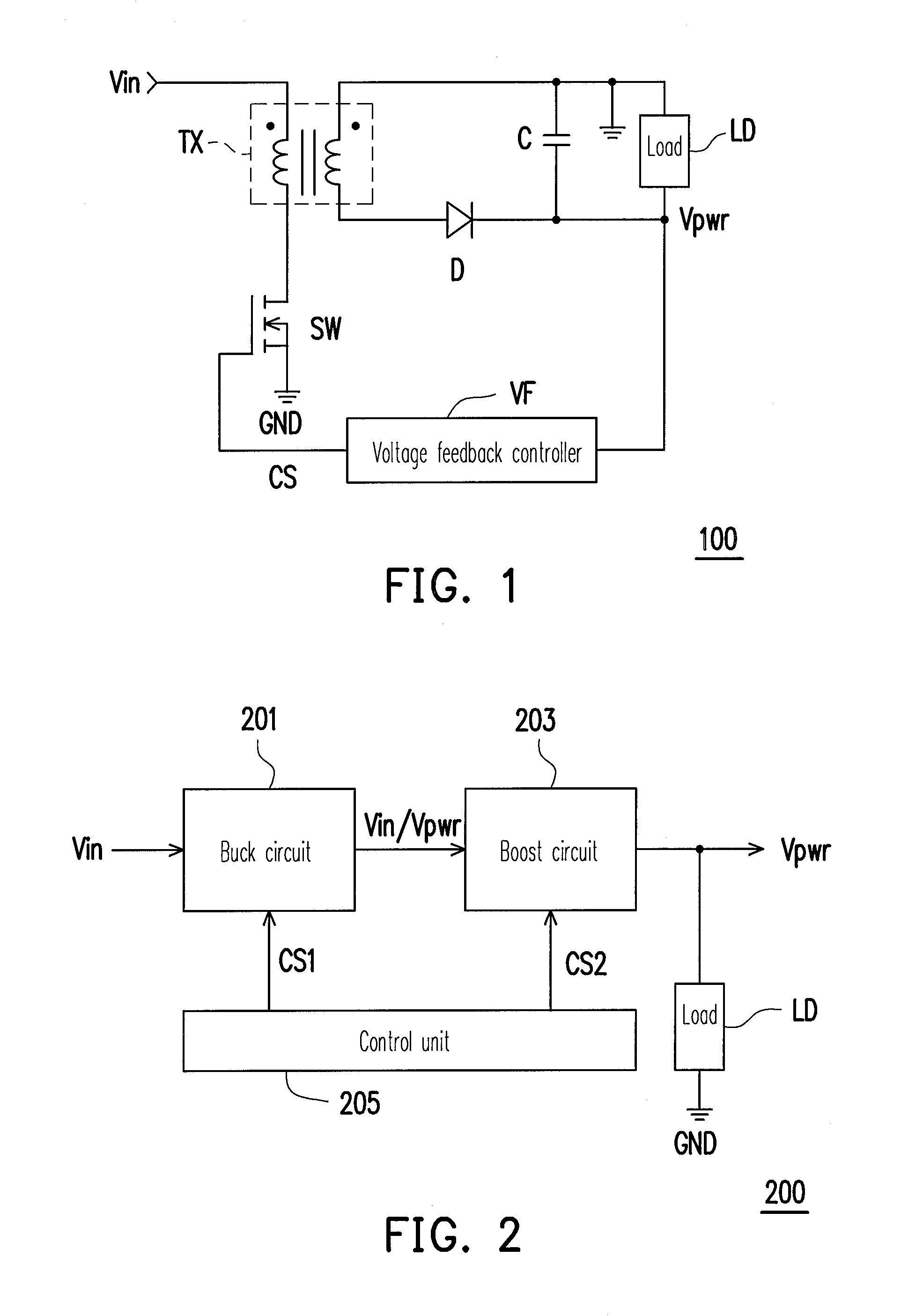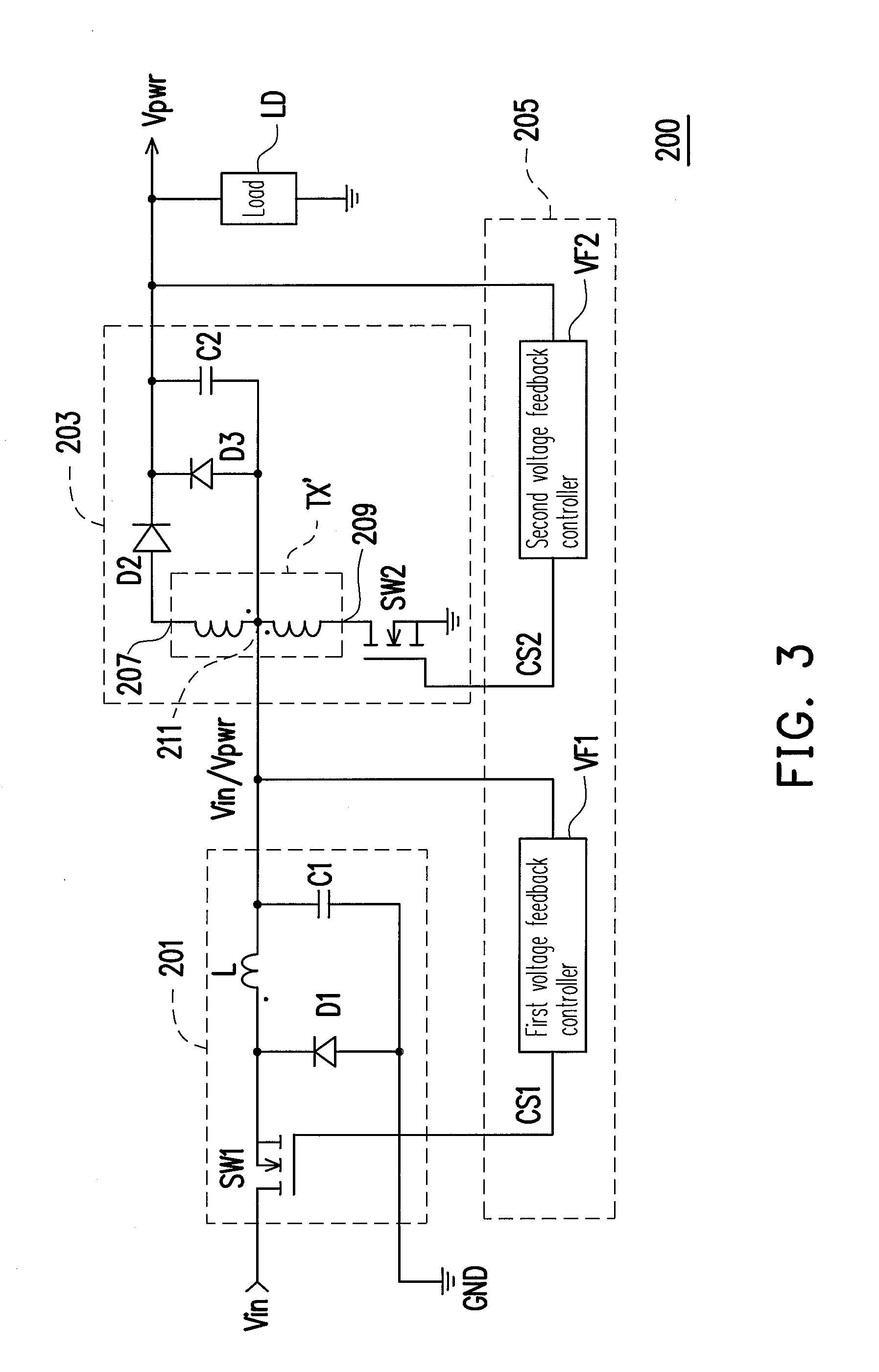Dc-to-dc converter
a converter and direct current technology, applied in the direction of dc-dc conversion, power conversion systems, instruments, etc., can solve the problems of difficult implementation of dc-to-dc converters b>100/b> in miniaturized electronic devices, large transformer tx, and low efficiency, etc., to achieve small size and high efficiency
- Summary
- Abstract
- Description
- Claims
- Application Information
AI Technical Summary
Benefits of technology
Problems solved by technology
Method used
Image
Examples
Embodiment Construction
The present invention will now be described more fully with reference to the accompanying drawings, in which exemplary embodiments of the invention are shown. Moreover, reference will now be made in detail to the present preferred embodiments of the invention, examples of which are illustrated in the accompanying drawings. Wherever possible, the same reference numbers are used in the drawings and the description to refer to the same or like parts.
FIG. 2 is a block schematic diagram illustrating a direct current (DC)-to-DC converter 200 according to an embodiment of the present invention. Referring to FIG. 2, the DC-to-DC converter 200 is adapted for generating a power voltage Vpwr required by a load LD (for example, and electronic device, though the present invention is not limited thereto), and the DC-to-DC converter 200 includes a buck circuit 201, a boost circuit 203, and a control unit 205. In the present invention, an output power of the boost circuit 203 can be less than, grea...
PUM
 Login to View More
Login to View More Abstract
Description
Claims
Application Information
 Login to View More
Login to View More - R&D
- Intellectual Property
- Life Sciences
- Materials
- Tech Scout
- Unparalleled Data Quality
- Higher Quality Content
- 60% Fewer Hallucinations
Browse by: Latest US Patents, China's latest patents, Technical Efficacy Thesaurus, Application Domain, Technology Topic, Popular Technical Reports.
© 2025 PatSnap. All rights reserved.Legal|Privacy policy|Modern Slavery Act Transparency Statement|Sitemap|About US| Contact US: help@patsnap.com



